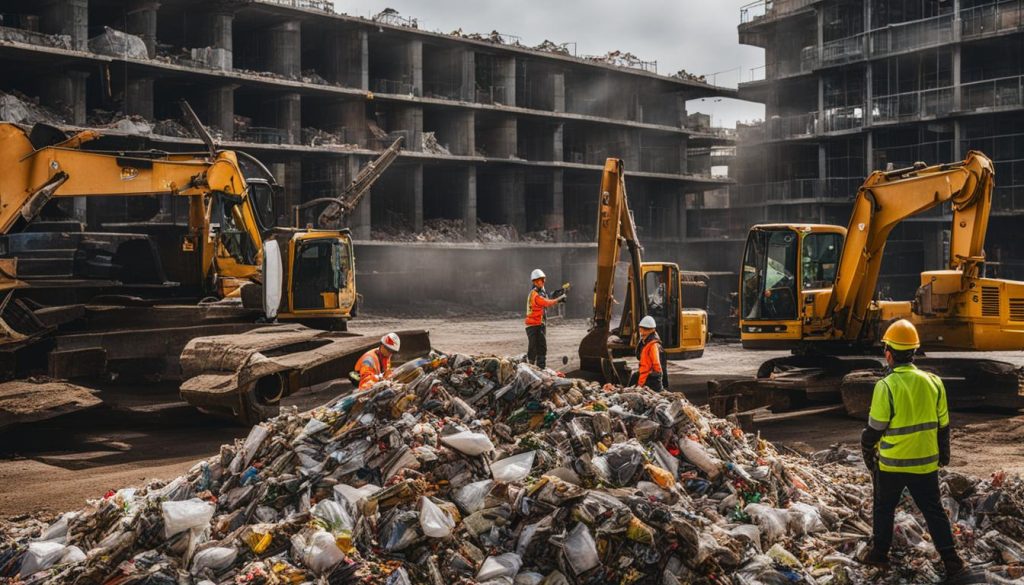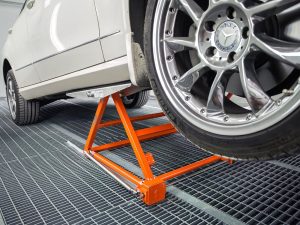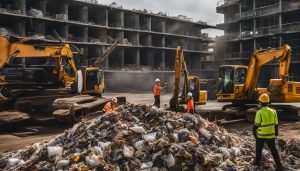Efficient Waste Management Solutions for Chicago Construction Projects

Construction schedules in Chicago rise and fall on logistics, and few logistics matter more than how debris moves off-site. Crews need containers that withstand concrete, timber, and steel, along with services that navigate city rules without slowing progress. This guide explains how roll-off dumpsters streamline debris handling, comply with local regulations, and support greener practices across job sites. You’ll find practical detail on container design, sizing strategies, recycling options, and the value of prompt hauling. Providers such as Brackenbox demonstrate how a well-run waste program can protect budgets and timelines alike while keeping sites safer and cleaner. Whether you’re managing a single build-out or a multi-phase development, the right Chicago Dumpster Rental strategy makes every trade more productive.
Roll-Off Containers Designed for Heavy Construction Debris
Roll-off containers for construction must be engineered for the brutal realities of demolition, excavation, and renovation. Reinforced walls, strong welds, and robust undercarriages enable safe handling of dense materials like broken concrete, roofing, and masonry. Swing doors that open fully at ground level allow crews to walk in heavy loads without risky over-the-side lifting. Low-profile options reduce ramp angles for wheelbarrows and skid-steer buckets, improving productivity and minimizing strain injuries. When containers are built for heavy-duty performance, you reduce downtime from damaged bins and help crews maintain a steady pace.
Built for demanding loads
Durability is only the beginning; smart design details protect both the job site and the public way. Smooth interior walls help prevent debris from catching during unloading, while integrated tie-down points secure awkward items. Many containers include tarp systems or compatible covers to meet tarp requirements and keep dust and litter contained during transport. Ground protection boards under the rails can prevent surface damage on asphalt or delicate concrete, a crucial step when staging near pedestrian areas. With the right roll-off, crews can load faster, reduce rework, and maintain safer workflows from the first bucket to the final sweep.
Meeting Chicago Disposal Rules Through Professional Services
Chicago’s permitting and disposal framework is strict for good reason: it protects streets, neighbors, and waterways. If you place a dumpster in the public way, you’ll generally need a right-of-way permit and proper safety measures such as barricades and lights, especially for overnight staging. Construction and demolition debris often must meet diversion requirements, which means you need documentation showing materials were recycled through approved facilities. Hazardous or special wastes—think asbestos-containing materials, certain electronics, or large volumes of paint—require additional handling and cannot be tossed in standard roll-offs. Professional providers translate these rules into clear, actionable steps so crews can focus on building, not paperwork.
Documentation, permits, and accountability
A dependable waste partner manages permits, schedules compliance pickups, and supplies weight tickets, manifests, and end-of-life certificates. These documents are essential for inspectors, lenders, and insurers, and they keep closeout packages clean. A seasoned dispatcher also navigates alley restrictions, hydrant setbacks, and loading zone requirements to place containers safely without blocking egress or fire routes. When regulations change—like updated recycling targets or facility acceptance criteria—a professional service adapts quickly and informs your team. The result is a smoother compliance pathway that avoids fines, reduces risk, and keeps project momentum intact.
Flexible Dumpster Sizes for Different Project Demands
Right-sizing your container selection is one of the simplest ways to control cost and maintain site organization. Small interior build-outs may thrive with a 10- or 15-yard bin for drywall and trim, while larger gut renovations often require 20- or 30-yard containers. For heavy rubble such as concrete and brick, lowboy containers with lower sidewalls prevent overloading by volume and reduce the risk of exceeding weight limits. On tight urban lots, shorter roll-offs can fit inside fence lines or alleys, minimizing the need for public-way staging and simplifying logistics. A tailored sizing plan cuts the number of hauls, keeps pathways clear, and matches the flow of each trade.
Matching volume, weight, and footprint
The best approach starts with a quick waste audit that examines debris types, production rates, and available space. If you expect mixed debris but also generate clean metal or concrete, consider dual-container setups to boost diversion rates and avoid contamination fees. Staggered drops—starting with a smaller bin for framing and switching to a larger one for drywall—align the container capacity to actual waste streams. Digital dispatch tools can time swaps between deliveries and inspections, preventing a container bottleneck. When coordinated with an experienced Chicago Dumpster Rental team, flexible sizing becomes a lever for both cost control and uninterrupted progress.
Eco-Conscious Disposal Methods Supporting Urban Sustainability
Today’s urban projects are judged not only by what they build but also by what they conserve. Recycling concrete, metal, and clean wood reduces reliance on virgin materials and lowers greenhouse gas emissions associated with extraction and manufacturing. Modern sorting facilities separate mixed loads into reusable commodities, while targeted source separation on-site can deliver even higher recovery rates. Documentation of diversion supports sustainability goals, responds to city directives, and can contribute to third-party certifications. By making recycling the default, projects turn waste into measurable environmental benefits.
Turning debris into resources
Leading haulers invest in optimized routes, efficient loading, and coordinated backhauls to shrink transportation footprints. Some providers, including Brackenbox, prioritize material recovery at scale, channeling recyclable streams to facilities with high diversion rates while keeping contaminated loads out of landfills. Clear labeling on containers—“Clean Concrete,” “Metal Only,” or “Mixed C&D”—helps crews sort quickly without guesswork. Training toolbox talks and simple signage reinforce best practices for new subs rolling onto site each week. Over time, consistent, eco-conscious methods reduce tipping costs, earn stakeholder trust, and build a culture that values responsible disposal.
Timely Pickups That Keep Job Sites Clean and Organized
Nothing stalls a crew like an overflowing dumpster or a container blocking deliveries. Coordinated pickups and swaps keep staging areas open, protect scaffolding and crane paths, and ensure debris never piles into walkways. A predictable hauling rhythm also helps trades finish zones in sequence—demo, cleanup, layout—so the next team can mobilize right away. Equally important, prompt removal reduces windblown debris, pests, and neighborhood complaints that can trigger inspections. Time precision isn’t a luxury in Chicago; it’s the scaffolding that holds a schedule together.
Scheduling for momentum and safety
Reliable haulers maintain communication windows and provide updates when a truck is en route, on site, or delayed by traffic or weather. If a pour or delivery changes plans, dispatch can re-slot a pickup to prevent costly idle time. Night or early-morning swaps may be used to minimize conflicts with daytime operations and city traffic patterns. When aligned with a responsive Chicago Dumpster Rental provider, just-in-time service elevates productivity and cleanliness in one move. The payoff is visible: tidier sites, fewer slip-and-fall hazards, and smoother day-to-day coordination among trades.
Waste Handling Practices That Reduce Environmental Impact
What you do on site matters as much as what happens at the transfer station. Source separation—keeping clean concrete, metals, and cardboard aside—prevents contamination and increases diversion rates. Covering containers and consolidating light materials reduce dust and litter, a meaningful step in dense neighborhoods and near waterways. Deconstruction approaches, where feasible, allow recovery of reusable fixtures, architectural elements, and dimensional lumber. Even small tweaks, like staging bins near work areas and assigning debris leads, can change the recycling outcome.
Practical steps that scale on any job
Consistency drives results, and simple routines tend to stick. Start each morning with a brief debris plan: today’s tasks, expected materials, and which bin takes what. Use clear signage, color coding, and quick refreshers at foreman meetings so new subs understand the rules. Track loads with photos and weight tickets, highlighting wins—such as a high concrete recovery rate—to keep teams motivated. Over time, these practices become habit, lowering environmental impact while streamlining cleanup and reducing extra hauls due to contamination.
Why Professional Management Improves Construction Efficiency
Waste management isn’t just an operational line item; it’s a project control mechanism. Professional oversight turns container placement, hauling frequency, and facility selection into levers that support schedule, safety, and cost certainty. Predictable pricing with transparent weight thresholds reduces invoice surprises and keeps procurement teams aligned with field realities. Integrated reporting—daily haul logs, diversion summaries, and permit documentation—simplifies closeout and satisfies lender or owner requirements. When the debris plan is strong, every other trade benefits from a cleaner, safer, more navigable site.
Turning logistics into a competitive advantage
Experienced teams anticipate obstacles and design around them: small bins for tight alleys, lowboys for heavy loads, and timed swaps to avoid crane picks and deliveries. Coordinators monitor weather, inspections, and major material drops to adjust hauling windows and prevent container gridlock. Clear escalation paths ensure urgent issues—blocked access, contaminated loads, overflowing bins—get rapid responses. When you pair those controls with a trusted Chicago Dumpster Rental partner and a provider like Brackenbox that centers reliability and recovery, you protect both your timeline and your reputation. In a market where margins are tight and scrutiny is high, professional waste management is the quiet engine that keeps projects moving forward.





